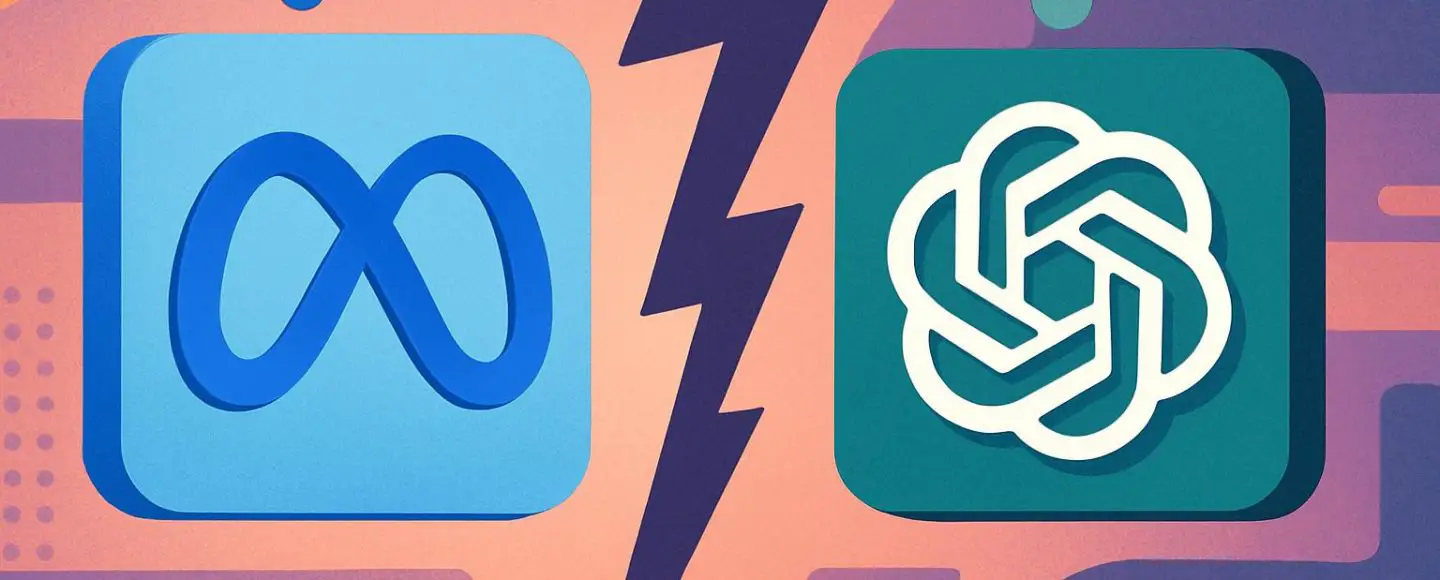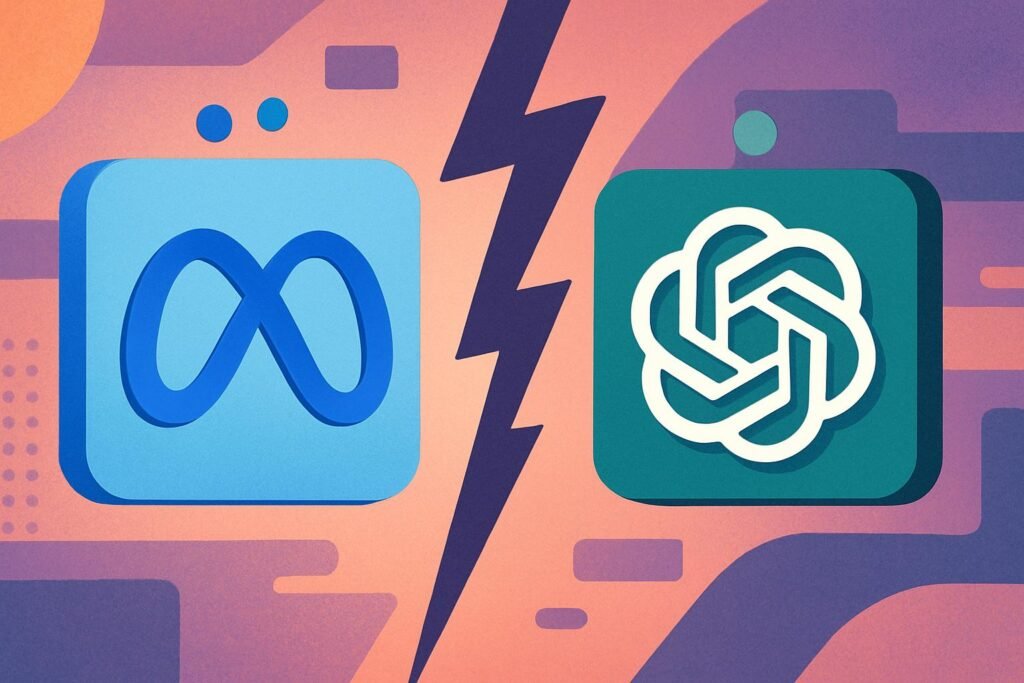
If you’re watching the AI race closely, the headline Meta’s New AI Rivals GPT-4 signals a major development. Meta has introduced its most capable generative AI model to date, bringing heated competition to OpenAI’s GPT-4. Designed to match or exceed GPT-4 in key benchmarks, Meta’s LLaMA 3 is built with multimodal functionality, scalability, and ethical guidance in mind. It is not just another large language model; it is targeted at real-world enterprise applications and will power features across Facebook, Instagram, and WhatsApp. With open-source principles and advanced reasoning capabilities, Meta is positioning itself as a serious contender in the generative AI space.
Key Takeaways
- Meta’s LLaMA 3 model competes directly with GPT-4 in performance, reasoning, and multimodal tasks.
- Designed for enterprise scale, LLaMA 3 supports integration across Meta products and business applications.
- Open-sourced for transparency, encouraging global AI collaboration and innovation.
- Ethics and efficiency are central, with focus on responsible deployment and operational sustainability.
Meta’s newly announced large language model, LLaMA 3 (Large Language Model Meta AI), represents a major technical and strategic evolution in its AI roadmap. Developed under Meta’s Fairness, Accountability, and Transparency (FAIR) AI division, the model has been benchmarked against leading competitors, including OpenAI’s GPT-4 and Anthropic’s Claude 2.
With multimodal capabilities, LLaMA 3 can process both text and image inputs. This enables diverse applications such as complex question answering, image captioning, document analysis, and interactive chat. The architecture is optimized for high throughput and scalability across use cases.
Head-to-Head: LLaMA 3 vs GPT-4 vs Claude 2
Meta’s confidence in LLaMA 3 stems from its strong benchmark scores. The model performs at or above GPT-4 levels in several leading evaluations. Here is a comparative snapshot based on publicly available data and metrics reported by Meta:
| Model | MMLU Score | ARC Benchmark | HellaSwag | Multimodal Support | Open Source |
|---|---|---|---|---|---|
| LLaMA 3 | 86.5% | 91% | 90.7% | Yes | Yes |
| GPT-4 | 86.4% | 90.2% | 89.8% | Yes | No |
| Claude 2 | 84.8% | 87% | 88.2% | Yes | No |
LLaMA 3 matches or slightly surpasses GPT-4 in established benchmarks like MMLU (Massive Multitask Language Understanding), ARC (AI2 Reasoning Challenge), and HellaSwag (commonsense reasoning). This reflects Meta’s commitment to closing the performance gap with leading commercial models. For those interested in broader AI comparisons, this ChatGPT-4 vs Bard AI breakdown explores key differences in capabilities and availability.
Meta is deploying LLaMA 3 directly across its core platforms for scalable business value:
- WhatsApp: AI chat assistants are supporting customer service and automation pipelines.
- Instagram: Use cases include caption generation, moderation enhancements, and creator tools.
- Facebook: AI-powered content generation, ad optimization, and community management tools are now possible.
For businesses, LLaMA 3 offers versatile deployment models. These include on-premise setups, API access, and domain-specific fine-tuning for sectors such as retail, health, and financial services. Meta is also supporting enterprise partners with compliance guidance on responsible AI deployment and data practices.
Open Source and Responsible AI Strategy
Unlike GPT-4, which remains proprietary, Meta has adopted an open-source framework for LLaMA 3. Developers and researchers can access model weights, architecture details, and even training datasets. Transparency promotes community innovation and external audits, which are critical for identifying vulnerabilities early.
Meta’s responsible AI strategy includes key elements such as:
- Red-teaming to simulate high-risk misuse scenarios
- Published transparency reports outlining model limitations
- Bias identification and reduction through pretraining protocols
This commitment to responsible innovation is part of Meta’s broader efforts. For example, the company recently introduced a watermarking tool for AI-generated videos that helps identify synthetic content. Such initiatives reflect growing recognition of ethical challenges in generative AI use cases.
Expert Insights and Industry Response
AI researchers have responded with cautious optimism. Dr. Percy Liang from Stanford emphasized that the open release of LLaMA 3 could accelerate advancements in AI safety and robustness, assuming Meta maintains detailed documentation. Enterprises piloting the model are already customizing AI copilots and information assistants tailored to internal workflows.
Analysts also consider this launch to be a major strategic shift. In an evaluation of recent AI developments, Meta and Microsoft AI investments were compared, highlighting Meta’s LLaMA 3 as a key move in diversifying its portfolio beyond advertising.
The Competitive AI Landscape in 2024
In 2024, generative AI is shaped primarily by a few leading models:
- GPT-4: Integrated into Microsoft tools like Azure and Copilot; remains proprietary.
- Claude 2: Preferred for reliability and professional use cases, especially in regulated industries.
- Gemini 1.5: Focused on integration with Google Search and Workspace; optimized for multimodal content.
- LLaMA 3: Positioned through open-source access and native integration across Meta’s user platforms.
LLaMA 3 benefits from an ecosystem that includes Instagram, Facebook, and WhatsApp. This allows Meta to quickly test and refine AI features directly with billions of users. By contrast, other models are more often used in sandboxed testing or enterprise-only settings.
What This Means for Businesses
Business leaders evaluating AI adoption should look closely at LLaMA 3. Potential benefits include:
- Improved chatbots for customer engagement and support
- Enriched personalization for product recommendations
- Efficient marketing content and visual asset creation
- Searchable knowledge systems for operational intelligence
LLaMA 3’s open architecture may offer a more flexible and cost-effective alternative to some commercial APIs. Meta is also building support for containerized deployment and model distillation, making it easier to adopt AI with lower latency and increased data control. In examples of productivity enhancement, learn how GPT-4 and Python are automating tasks to reduce manual workload in enterprise environments.
The introduction of LLaMA 3 marks a defining moment in Meta’s AI journey. With comparable performance to GPT-4, full open-source accessibility, and utility across billions of users on social platforms, Meta is reshaping how companies and developers view large language models.
References
Brynjolfsson, Erik, and Andrew McAfee. The Second Machine Age: Work, Progress, and Prosperity in a Time of Brilliant Technologies. W. W. Norton & Company, 2016.
Marcus, Gary, and Ernest Davis. Rebooting AI: Building Artificial Intelligence We Can Trust. Vintage, 2019.
Russell, Stuart. Human Compatible: Artificial Intelligence and the Problem of Control. Viking, 2019.
Webb, Amy. The Big Nine: How the Tech Titans and Their Thinking Machines Could Warp Humanity. PublicAffairs, 2019.
Crevier, Daniel. AI: The Tumultuous History of the Search for Artificial Intelligence. Basic Books, 1993.


